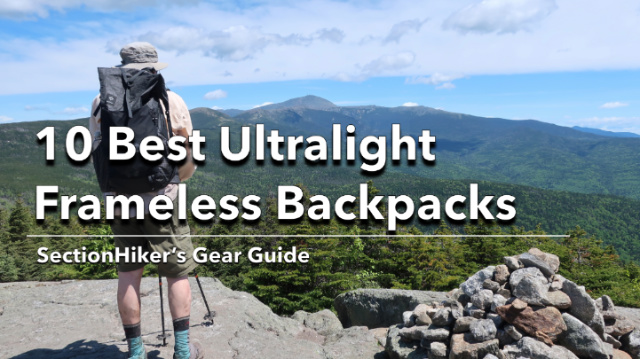
As ultralight backpacking gear has gotten lighter weight, so have ultralight backpacks. So much so, that many thru-hikers, section-hikers, and long-distance backpackers are turning to frameless ultralight backpacks for their adventures. Designed for loads of 20-25 pounds or less (including food, water, and fuel), these backpacks and their manufacturers have proven to be wildly innovative in their use of cutting-edge materials, colors, and features. While backpacking this light isn’t for everyone, the increased availability of ultralight backpacking gear and access to know-how through social media has made it more achievable than ever.
If your aim is to reduce the weight of your backpack to close to a pound or less, here are some ways of achieving that goal.
- Use a frameless backpack, since you don’t need the added support or weight of a frame or even a hip belt for loads under 20-25 pounds.
- Reduce the volume of your pack to 40L or less. which forces you to use lighter-weight and more compact gear.
- Pick backpacks made with ultralight fabrics like Dyneema DCF, Ultra, or EcoPak which are waterproof and highly durable.
Here are the 10 frameless ultralight backpacks that we recommend that embody these qualities.
| Make / Model | Total Volume | Weight |
|---|---|---|
| Zpacks Nero Ultra 38 | 38L | 10.3 oz |
| Gossamer Gear Kumo | 36L | 20 oz |
| Nashville Packs Cutaway | 42L | 17.5 oz |
| Pa'lante V2 | 31L, 37L | 17-19 oz |
| Osprey Talon Velocity 30L | 30L | 35.5 oz |
| SWD Ultralight Superior Frameless | 45L | 18.2 oz |
| Mountain Laurel Designs Burn | 38L | 16.5 oz |
| Gossamer Gear G4-20 | 42L | 20-26 oz |
| Mountainsmith Zerk 40 | 40L | 29 oz |
| ULA CDT | 54L | 27.1 oz |
Be sure to read our Frameless Ultralight Backpack Selection Guide below which explains these tradeoffs in greater detail.
1. Zpacks Nero Ultra (38L)
2. Gossamer Gear Kumo (36L)
| Shop at Garage Grown | Shop at Gossamer Gear |
3. Nashville Packs Cutaway (42L)
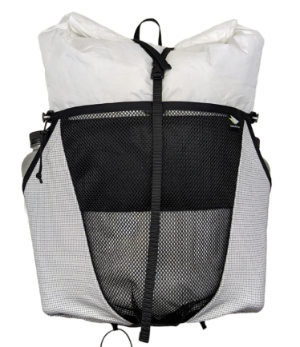
4. Pa’lante Packs V2 (31-37L)
5. Osprey Talon Velocity (30L)
| Shop at REI | Shop at Osprey |
6. Superior Wilderness Designs Ultralight Superior (40L)
7. Mountain Laurel Designs Burn (38L)
8. Gossamer Gear G4-20 (42L)
9. Mountainsmith Zerk (40L)
10. ULA Equipment – CDT (54L)
Frameless Ultralight Backpack Selection Guide

Custom vs. Off-the-Shelf Backpacks
Many frameless ultralight backpacks are made by hand by cottage manufacturers and can be customized in terms of colors, fabric, or features. Some of the more established backpack manufacturers or retailers listed above only offer “stock” backpacks with a fixed set of features. The advantage of purchasing a stock backpack is that it’s usually available immediately without a long wait time. If you decided to go the custom route, be sure to contact the manufacturer if you have any questions before you order. Most custom backpacks are non-returnable.
Frameless Ultralight Backpack Volume
How much volume do you need in an ultralight backpack, when you’re trying to get your TOTAL pack weight below 20 pounds? It’s hard to make a blanket recommendation because it ultimately comes down to the climate you plan to hike in and what your clothing, sleep insulation, shelter, nutrition, and water needs will be. For general three-season conditions, most UL backpackers find that a 40L pack provides more than enough volume for a 3-5 day trip, including gear, food, fuel, and water. It gets much more difficult to fit everything you need into a 30L backpack, however, unless you can resupply more frequently, you go stoveless, or you don’t need to carry much water. However, given the list of packs above, there’s not a huge weight penalty for carrying a higher volume pack than you need, since they’re all so lightweight and you can compress them using a roll-top closure or side compression.
Massive External Storage
Frameless ultralight backpacks tend to have a lot of external storage which is accessible while you’re still wearing the backpack. This is as much a mantra as a design philosophy with the underlying goal of hiking as many miles as possible (like all day) without ever having to stop and take your backpack off. Many frameless ultralight packs come with pockets sewn onto their shoulder straps, bottom stretch pockets so you can reach underneath a pack when worn to pull out snacks or deposit used wrappers, and accessible side pockets.
Ultralight Backpack Fabrics
Most ultralight backpacks are made with Dyneema Composite Fabrics (DCF), XPac, Nylon (Robic, Cordura, Dyneema X, etc.) In terms of durability, Ultra is usually the most durable in terms of abrasion resistance, then EcoPak, XPac and LiteSkin, then DCF, and finally Nylon, although it depends on the denier or weight of the material used. DCF and XPac revolutionized UL backpack manufacturing because they’re so lightweight, but are being quickly overtaken by newer waterproof fabrics like EcoPak and Ultra which are even more robust and ecologically sustainable products.
The biggest areas of wear and tear on a backpack is the base, where you put it down on the ground, and the side pockets, especially if they’re made with mesh. Most UL pack makers have switched to more durable mesh, use more durable stretch mesh that has finer holes and is less prone to snagging, or have switched to making external pockets with solid fabrics for better durability.
DCF, XPac, ECOPAK, Ultra, and LiteSkin are all waterproof materials so they won’t absorb water when it rains. DCF has the advantage that it can be seam-taped which greatly increases the waterproofing of a backpack. While XPac, ECOPAK, and Liteskin can be seam-sealed, most people don’t bother and line their packs with trash compactor bags or use waterproof stuff sacks. Very little water will get in anyway. It’s much the same with Robic Nylon and other high-tenacity nylons although they will soak thru, can make your gear wet, and take a while to dry out. See the following FAQs for more advice and reader discussion:
- Dyneema Composite Fabrics FAQ
- DCF vs X-Pac for Ultralight Backpacks: Pros and Cons
- Do You Need a Backpack Rain Cover?
- How to Keep Your Backpacking Gear Dry with Trash Compactor Bags
Hip Belts on Frameless Backpacks
The hip belts found on frameless backpacks are not load-bearing because there’s no frame to transfer to load to the hips. This explains why many ultralight packs don’t have them, they’re removable, or stowable, and only made with webbing if they’re included at all. Their only real purpose is to provide an anchorage for hip belt pockets or to prevent the pack from bouncing against your torso if you walk fast.
Since the hip belts are not load-bearing, all the weight will rest on your shoulders. When choosing packs, you should consider how much shoulder strap padding you prefer and the strap width that you find most comfortable.
Shoulder Straps
An increasing number of frameless pack makers are including S-shaped backpack straps on their packs, which are more comfortable for women because they accommodate breasts more comfortably. Many men also find them more comfortable than the J-shaped shoulder straps that were used previously.
There’s also an increasing use of vest-style shoulder straps on many backpacks which can take some getting used to if you were born and bred on more conventional shoulder straps. The added width and pocket storage on vest-style packs makes them an attractive feature and can help distribute the load across your shoulders, especially if your pack lacks a hip belt.
Torso Length
Shorter torso lengths are also increasingly available to accommodate women, who on average, aren’t as tall as men. However, matching your exact torso length is less critical on a frameless backpack because the hip belt is not load-bearing. The fitting process is actually more similar to fitting a daypack (without a hip belt) than a regular framed backpack, although matching your torso length is still a good benchmark to aim for.
Check Out All of SectionHiker's Gear Guides!
- 10 Best Hiking Shoes and Trail Runners
- 10 Best 2-Person Backpacking Tents
- 10 Best 1-Person Backpacking Tents
- 10 Best Backpacking Stoves
- 10 Best Backpacking Water Filters
- 10 Best Lightweight Backpacks
- 10 Best Ultralight Backpacks
- 10 Best Backpacking Sleeping Bags
- 10 Best Ultralight Backpacking Quilts
- 10 Best Lightweight Backpacking Chairs
- 10 Best Backpacking Sleeping Pads
- 10 Best Backpacking Rain Jackets
- 10 Best Hiking Daypacks
- 10 Best Hiking Pants
- 10 Best Trekking Poles
 SectionHiker.com Backpacking Gear Reviews and FAQs
SectionHiker.com Backpacking Gear Reviews and FAQs 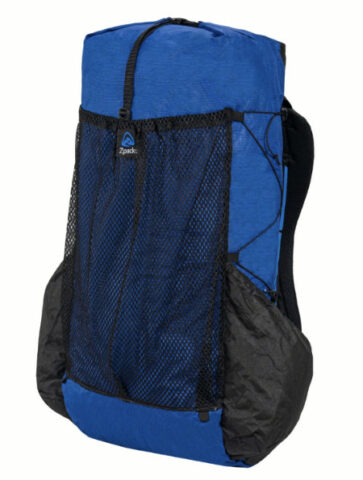
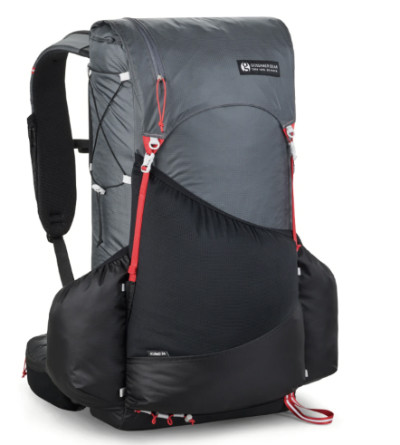
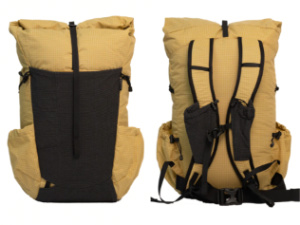

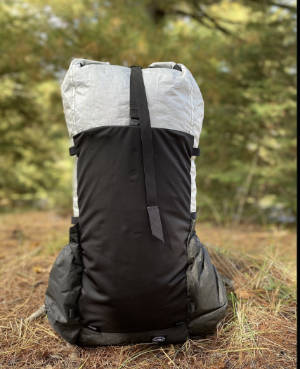

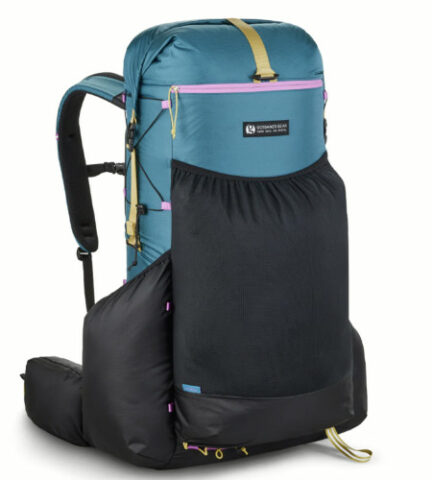
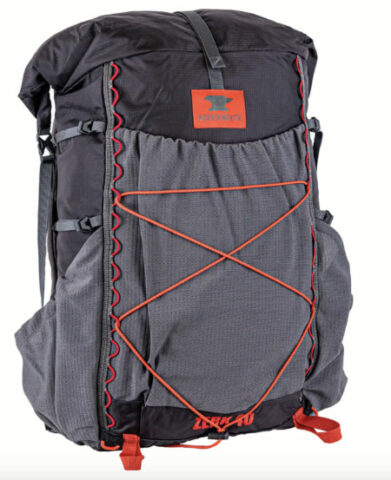

i got a Nashville Pack Cutaway and its my 1-3 day go-to pack right now. Really enjoying it. I was very skeptical because it seemed soooo lightweight but it’s a joy. Two sternum straps are necessary and I got the vest style harness. Really light and east to get comfortable with.
Thanks for your info/evaluation! Appreciated!
I have the Pa’lante V2. I did modify it by having daisy chains sewn onto the shoulder straps. (hear that Pa’lante? LOL)
It’s a joy to use. I was able to use a small bear canister – before I bought an ursack. Even frameless, and without load lifters (obviously), there was no discomfort for my bony shoulders – up to 19 lbs. I’d say the max would be pretty close to that.
I have 2 favorite frameless packs. 1. Zimmerbuilt Quickstep and Bigstep 2. Yama Gear Sassafras.
I bought a quickstep. Hated it. Sold it.
Plus one for the quickstep and bigstep. Really like Zimmerbuilt.
For everything besides winter backpacking, I’ve been using the a DCF Z-Packs Nero for going on 4 years now. I added a Z-Packs water bottle holster and cinch sack to the shoulder straps and also use a fanny pack when I hike with it. This has proven a great system for me. The wide, free floating, shoulder straps carry about 25 pounds comfortably, the small size keeps me from bringing too much and I have enough exterior storage to access snacks and other commonly used items without taking it off, which I find essential to making good mileage during the day.
There have been a few issues with my pack. First, the tiny hooks they use to attach the shoulder strap accessories to the daisy chains bent or broke within a few months of use. I just tied things on with a bit of cordage and that has worked great for years now. The mesh they were using at the time tore on my first trip and the DCF/Nylon fabric of the pack body wore thru in the abrasion prone areas. I was able to send it back to Z-Packs and they replaced my mesh and patched the worn spots on the pack body at no charge. The mesh and Ultra material they are using now seems to be more durable and I’m probably going to buy the same pack again when mine finally wears out.
I really like the Nero too. Very easy to use.
No GG Virga 3?
The virga 3 has an annoying flaw – pad pocket on the inside….total pain compared to an external pad pocket. I mean, it’s ok. But not best in class.
It’s not starting shipping until late April, but I’m really excited about the Durston Wapta 30. Has almost all the features (and weight) I’ve been looking for, to pack for my 1-2 night summer trips.
Mountain Laurel Designs is using Challenge Ultra X (100/200 combo) or Challenge Ultragrid for fabrics. I have no affiliation but I love my Burn in Ultragrid. Built right, priced right.
Disappointed / disappointing that Atom packs don’t get a mention here.
No Waymark packs? I have the Mile 28 which I could probably use as an overnight in a pinch. Fits my lumps and curves very comfortably, and the quality build is impressive. Thanks for your comprehensive reviews.
Waymark appears to have gone out of business.
The MysteryRanch Bridger is a pack (whether 35, 55, or 65 L) built for heavier carries that employs vest-style shoulder straps. Those who love the pack argue it is the straps that make the packs carry so well. I wonder how this is achieved with a heavier pack? Perhaps they design their straps differently than the smaller volume packs?
I’ve used a bridger 55 and I really didn’t like their strap system. That’s just me. I didn’t find it particularly comfortable.
In my experience, the sweet spot for vest-style straps really is for about 35L or less because they work best with packs that don’t require a hip belt. Since the vest makes the pack ride higher up the torso, it negates the effect of a hip belt since there is no load transfer. The bridger is also a very heavy pack with a frame – not frameless at all!
One of the reasons I wrote this article:
https://sectionhiker.com/vest-style-backpack-straps-vs-conventional-backpack-shoulder-straps/
is to make the point that slapping vest-style straps onto a larger backpack doesn’t provide a different carry. It just provides more accessible storage. What I see is that conventional backpack makers like MR are putting vest-style straps onto higher volume packs for that purpose but not to exploit the difference in suspension characteristics that vest-style straps can provide by positioning packs higher on the torso.
Thanks for the reply.
Perhaps off-topic, but can you comment on how shoulder strap shape (J or S) can contribute to or detract from shoulder (dis)comfort?
I have wide, sloping shoulders but a fairly flat chest. I’ve used only J-shaped shoulder straps and have had problems with shoulder discomfort. Of course, this could be due to many factors (size of pack, load carried, etc.). However, given my anatomy as described, would one work “better” for load carry than another? Or is it just more noise in the overall scheme of transferring weight to the hips?
I ask because I’m contemplating the purchase of a pack, and have read many of your reviews (thanks!). I am thus looking at trying the REI Flash 55, but concerned that perhaps the straps are not the optimal shape for my torso. Counterintuitively, perhaps, something like the Durston Kakwa straps (S-shaped, thinner padding) might provide more comfort.
S-shaped straps were originally developed for women because they curved around breasts and men with wide (barrel) chests, but anyone can use them quite comfortably. They sound like they might work for you. There are other factors that could be important – width, padding thickness, flexibility, breathability, and ease of rotation. It’s like fitting a suit – everyone has different preferences. more an more manufaturers are offering S-shaped straps as standard because they work for men and women. J-straps mainly just work for men.